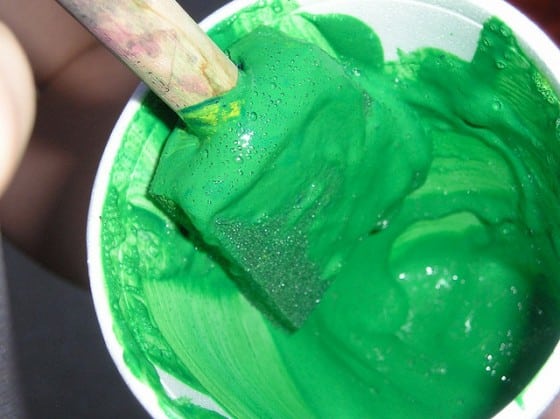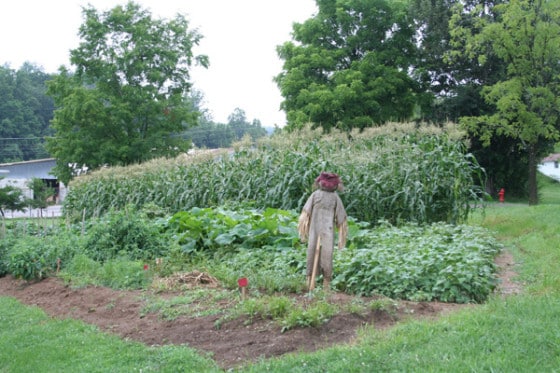
Earth-Embracing Paints and Sealants

When you’re looking to engulf yourself in more eco-friendly surroundings, start by using greener paint on your surrounding walls – and by that, I don’t mean you should paint a “green” room (unless that’s the look you’re going for, in which case, by all means).
The greener paint at the center of today’s discussion is a greatly-revamped version of the paint we have gotten to know since the anti-lead era began back in the late 1970s. This new and improved formulation of paint includes lower amounts of toxic volatile organic compounds (VOCs) that have previously been thought necessary in order to get a good coat out of a can of paint.
Fortunately, we have since discovered this is not the case! Indeed, many of the eco-friendlier paints and wood sealants that contain low to zero VOCs ‘coat and cover’ imperfections in surfaces just as well as their more poisonous counterparts.
Although many folks are jumping on the VOC-free bandwagon, far too few actually know why the new advancements are so much better for the environment. So, here’s a bit more background as well as a recommendation for a more earth-embracing wood sealer.
The Ins…
In a nutshell, the trouble with VOCs is that they are unstable chemical compounds containing toxins and cancer-linked carcinogens that are pumped into the air you breathe – and by association, your lungs – as paint dries.
When these poisonous vapors are released they produce ozone, which as we all know, causes air pollution and health issues including everything from breathing problems, nausea and headaches to cancer and liver damage. In short, inhaling this stuff is not a good thing.
Happily, with the new low-VOC and VOC-free offerings, we no longer have to inhale these toxins! In fact, these new paints may even help you breathe as easily inside as you do outside. But there’s no substitute for the real thing, so let’s examine an eco-friendly option designed for the great outdoors.
…and the Outs
When you want to take it outside, perhaps to a raised bed garden, consider this go-to for sealing everything wood-related:
Tricopolymer VOC Free Non-Toxic Lumber-Seal
This “eco coating” wood sealant does it all. Not only is it UV-resistant, water-resistant and free of toxins and other VOCs, but it also repels just about everything else in the environment that is harmful including mold, decay and pests!
For use in your garden – specifically, your raised garden beds – you need not worry about splinters from using green wood (that also has a tendency to warp and twist) or chemical leaching from treated lumber: simply coat the wood (any and all species of hardwoods and softwoods, green or dry) with this sealant and you’re good to go.
There are also variations of this product designed specifically for fencing (Fence-Seal), concrete (ConKrete-Seal) and cedar (Cedar-Seal). There is even one that caters to our four-legged and winged friends: Kennel-Seal!
Perfect for use in dog houses, kennels, chicken coops, pig-pens and horse stalls, Kennel-Seal is scratch-resistant, won’t peel or chip and is designed to resist the urine and fecal matter that is notorious for ruining wood and concrete housings. Its easy to clean and non-toxic nature aids in sanitation and overall animal health, which is a great thing for everyone involved!
Back to Basics
In general, there are some additional ways to make your painting process greener from start to finish.
- If you do not use all of your paint and you will not need it for other purposes, donate it to a local shelter or an organization like Habitat for Humanity, rather than throwing it away.
- If you have leftover paint that you want to save for touchups or for another project down the road, reseal the can (clean off the lid and lightly hammer the lid back into place) and store it upside down – this prevents air from entering the can and keeps the paint from drying out.
- When you are interrupted in the middle of a paint job or otherwise finished for the night, instead of cleaning the roller or brush, try wrapping the brush in a bamboo roll-up cloth holder or wet towel. If you opt to wrap your brush with a wet towel, your next step is to put the brush and towel in a plastic bag. Squeeze all of the air out then place it aside for later use. By wrapping the paint brush in a wet towel first you will be able to reuse the plastic bag again and again thus cutting down on waste. Using this method also cuts down on the water that would have been required if you washed your brush every time.
- If you do decide to dispose of your leftover paint, do so properly:
- For latex-based paint left lining the can, do not rinse it out or pour it down the drain. Keep it away from pets and children, allow it to air dry completely in the can, then throw it away as a single unit.
- For larger quantities of latex-based paint, pour it into an absorbent material – kitty litter and newspaper shreds work well – and trash it after it has completely dried.
- Oil-based remnants need to be disposed of at a hazardous waste collection site.
What other painting and sealing tips do you have for a safer, less-toxic tomorrow?
Biofriendly Blog would like to thank Chris Long and Home Depot for this informative blog post on earth- and environmentally-friendly paints and sealants. Since 2000, Chris Long has been a store associate at a Home Depot in Illinois. He also contributes to the Home Depot website, where he provides tips to homeowners on everything from paint and painting supplies to wood stain.
Green paint image by jdog90 via Flickr Creative Commons



Post a comment